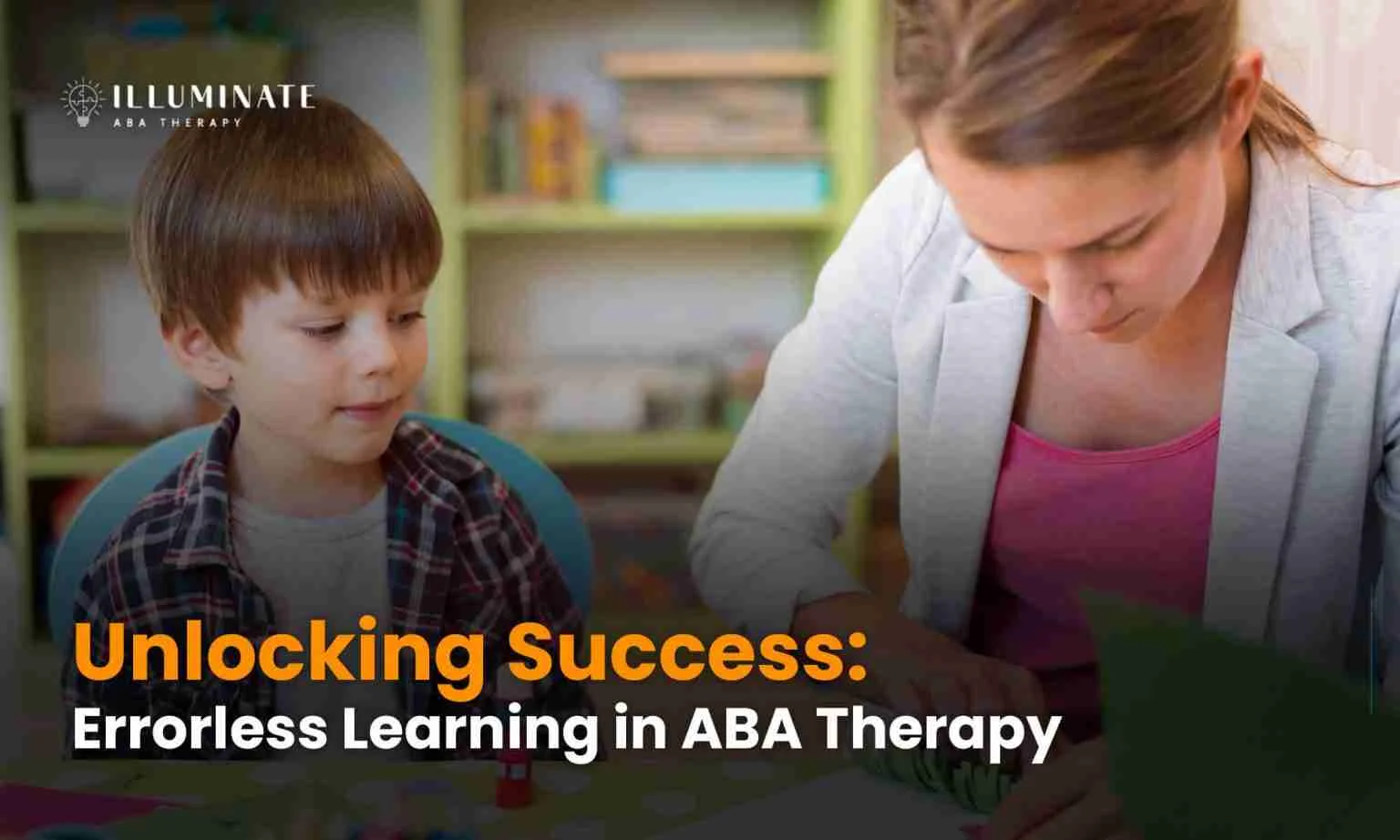Unlocking Success: Errorless Learning in ABA Therapy
ABA TherapyJuly 17, 2025

Introduction to Errorless Learning in ABA
Applied Behavior Analysis (ABA) therapy has been a game-changer for individuals with autism and other developmental disorders. One of the most effective teaching techniques used in ABA is Errorless Learning. This method focuses on minimizing errors during the learning process, allowing learners to experience success and build confidence from the start.
Errorless Learning has its roots in the principles of behavior analysis, and its effectiveness has been supported by numerous studies over the years. By providing immediate prompts and gradually fading them as the learner progresses, this technique helps individuals acquire new skills more efficiently and with less frustration.
Table of Contents
Principles of Errorless Learning
The key principles behind Errorless Learning are immediate prompts and prompt fading. When teaching a new skill, the instructor provides a prompt that ensures the learner responds correctly every time. As the learner becomes more proficient, the instructor gradually fades the prompt, allowing the learner to become more independent.
Errorless Learning differs from error correction methods in that it focuses on preventing errors rather than correcting them. By minimizing errors, Errorless Learning reduces frustration and increases confidence in learners, making them more motivated to continue learning.
Benefits of Errorless Learning

One of the primary benefits of Errorless Learning is faster skill acquisition. By experiencing success from the start, learners are more likely to stay engaged and motivated, leading to quicker mastery of new skills. Additionally, Errorless Learning has been shown to reduce problem behaviors that often arise from frustration or failure.
Research has consistently demonstrated the effectiveness of Errorless Learning in ABA therapy. A study published in the Journal of Applied Behavior Analysis found that learners taught using Errorless Learning methods acquired skills faster and maintained them better than those taught using error correction methods.
Implementing Errorless Learning
Implementing Errorless Learning in different settings, such as home, school, or clinic, follows a similar process. The instructor begins by breaking down the skill into small, manageable steps. They then provide a prompt that ensures the learner responds correctly, such as physical guidance, modeling, verbal prompts, or visual cues.
As the learner becomes more proficient, the instructor gradually fades the prompt, moving from more intrusive to less intrusive prompts. This prompt fading process is crucial for maintaining learner success while moving toward independent responses.
Practical Applications of Errorless Learning

Errorless Learning can be applied to a wide range of skills, including academic skills, communication, and daily living skills. For example, a child learning to tie their shoes might start with hand-over-hand guidance from the instructor, gradually moving to verbal prompts and visual cues until they can tie their shoes independently.
One real-life scenario demonstrating the success of Errorless Learning involves a child with autism who struggled with social skills. By breaking down social interactions into small steps and providing immediate prompts, the child's therapist was able to help them engage in successful conversations with peers. Over time, the child became more confident and independent in social situations.
Challenges and Considerations
While Errorless Learning is a highly effective teaching technique, there are some potential challenges to consider. One common challenge is prompt dependency, where the learner becomes overly reliant on prompts and struggles to respond independently. To overcome this, instructors must carefully plan and individualize their approach, gradually fading prompts at the right pace for each learner.
Another consideration is the importance of data collection and analysis in monitoring learner progress and adjusting teaching strategies as needed. By regularly collecting and analyzing data, instructors can ensure that Errorless Learning is being implemented effectively and make necessary adjustments to maximize success.
Tips for Parents and Caregivers
Parents and caregivers play a crucial role in supporting Errorless Learning at home. By creating a positive and supportive learning environment, they can reinforce the skills learned in therapy and help their child generalize them to everyday situations.
Some practical tips for parents include:
- Breaking down tasks into small, manageable steps
- Providing immediate prompts and gradually fading them
- Praising and reinforcing every correct response
- Creating a structured and predictable routine
- Collaborating with their child's therapist to ensure consistency
Parents can also seek out training opportunities to learn more about Errorless Learning and other ABA techniques. By working closely with their child's therapist and staying informed about best practices, parents can help their child reach their full potential.
Conclusion
Errorless Learning is a powerful tool in the world of ABA therapy, helping individuals with autism and other developmental disorders acquire new skills faster, reduce problem behaviors, and build confidence. By minimizing errors and providing immediate prompts, this technique sets learners up for success from the start.
As you embark on your child's ABA journey, consider incorporating Errorless Learning strategies into their therapy plan. With the right support and guidance from trained professionals, your child can unlock their full potential and thrive.
If you're interested in learning more about Errorless Learning or exploring ABA therapy options for your child, reach out to the team at Illuminate ABA. Our experienced therapists are dedicated to helping children with autism and other developmental disorders reach their goals and live their best lives.
Read About: The Power of Functional Communication Training (FCT)


